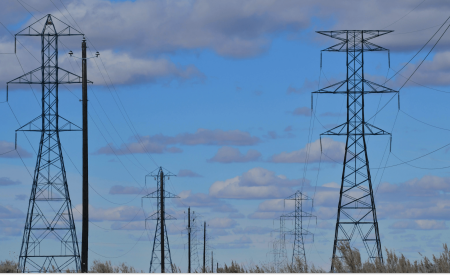We enable you to make better decisions about your energy operations.
The future of the energy sector
The future of the energy sector
1. ‘Democratization’ of energy information
The technical means to lay your hands on relevant energy data (both market data as well as your own operational data) is easily available for everyone. The energy sector will continue to open up this information as we see suppliers provide near-real-time dashboards for their clients, TSOs and DSOs publishing actual grid and balance information. When handling all this information is within everyone’s reach, any consumer or prosumer can become an active participant in the energy sector.
2. Near-real-time energy operations
The energy market is characterized by both volatile prices and an increasingly volatile supply and demand. This means market participants either need a perfect forecast, or a way to react and fully compensate for changing circumstances. In practice you will need both.
Energy producers and suppliers need flexibility in their portfolio of assets and consumers if they need to make corrections to the continuous operation. But for an effective correction you need a lot of information on which the decision to steer can be based. Not only generic market data, but also near-real-time data on client behavior, local solar irradiation and so on. This immense data stream has to be processed in such a way (i.e. near-real-time) that steering signals can be provided.
3. New entrants needing cloud-based ‘plug-in’-solutions
Even in an European energy market that is harmonized in many ways (at least on a conceptual level), the way information processes are configured differ from country to country or even from region to region. However, there’s no need for new entrants of a certain energy market to fully understand the what and why of every data format, let alone the time to follow up on all the market process changes that are put in place every now and then.
While the aforementioned democratization of energy information is an enabler for new entrants, a big challenge remains in seizing those opportunities. We expect small dedicated services will be needed that can be ‘plugged-in’ into dashboards and portals.
4. Optimization platforms
Having a grip on your energy operation and flexibility does not automatically imply that you can make the right decisions: weighing prices and availability of different energy carriers, combined with existing physical limits and setpoints is not an easy task. We expect a platform that enables external and internal dataflows to interact with a set of optimization tools, is going to play an essential role in the multi-commodity energy future.
5. The multi-commodity energy future
Sourcing energy will become much less straightforward. Namely, both availability and price levels of any energy needed for a primary process have become highly insecure and will spark the hybridization of energy operations. Producers will diversify their assets and consumers (i.e. industrial and residential) to switch from one energy source to another. Especially with the addition of for example CO2 emissions into the value-equation, multi-commodity energy origination will become an important challenge.
6. Track & trace of energy and CO2
As long as an energy system is not yet completely running on renewables, there may be times when your energy is not as renewable as you would wish. Calculating an administrative lump-sum at the end of the year will not be enough in the near future. This means simultaneity of energy production and use – especially in the case of electricity – will become important. Labeling, tracking and the traceability of kWh, but also of CO2 emissions or green, blue and grey hydrogen will become prominent.
7. The fight for flexibility
The value of energy flexibility in the energy system is common knowledge. Up till this point, energy flexibility was more or less the sole domain of the System Operator together with wholesale market participants. However, nowadays distributed flexibility is recognized as an important factor in countering the volatility caused by renewables.
It is not only to be used for balancing, but also for grid congestion on all voltage levels and optimizing energy usage on SPOT markets. In other words, a lot of parties are vying for the same flexibility and by contracting these parties opportunity-losses have to be taken into account as well.
8. Energy will move from price-based to value-based
Energy is past the point of just a cost item in a financial business case: sustainability, locality, possible interaction with surroundings, social aspects, etc., will all be added to the equation. The value becomes vested in assets (both producing and consuming). A solitary electricity or gas price will not mean anything without the context of all the other value factors. Getting a grip on this aspect may prove to be the hardest nut to crack in the energy transition.


 Close
Close 
.jpg?resolution=450x275&quality=95)

